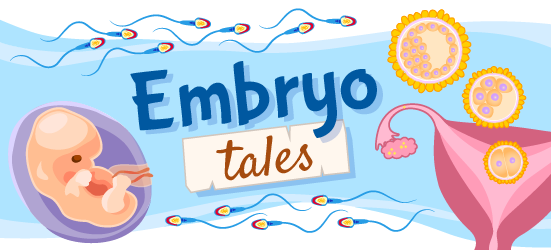
What Is the Menstrual Cycle?
Illustrated by: Sabine Deviche
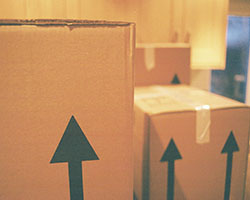
When change happens, it can be exciting, scary, or both. People experience changes in different ways, like moving to a different city or meeting a new friend. Well your body experiences changes, too. And one important change in the female body is called the menstrual cycle.
The menstrual cycle helps to prepare a woman’s body to become pregnant. That is certainly a big change. But if a woman does not become pregnant during the menstrual cycle, then what happens? Her body experiences a different kind of change. That change is called menstruation, or a period. And just like moving to a different city or meeting a new friend, getting a period can be exciting, scary, or both.
In the Embryo Project article “Estrogen and the Menstrual Cycle in Humans,” writers explore how the menstrual cycle works and why it is important in the female reproductive system.
Why Do Girls Get Periods?

Women give birth to children everyday. And thanks to the menstrual cycle, a woman's body is prepared for nurturing a baby when she becomes pregnant. During the menstrual cycle, different hormones tell the female body to prepare for pregnancy. But if a woman does not become pregnant, she experiences menstruation.
Menstruation, or a period, is when blood and tissue are released from the vagina. Periods last for three to seven days, and they happen about every 28 days. But, some girls can get their periods every 21 days, and other girls get theirs every 40 days. Every girl is different, and that’s normal. Periods start happening around age 12 or 13. But again, every girl is different. There’s quite a complex process that leads to menstruation, and it starts in the brain.
What Is Ovulation?
The body needs to be prepared before the egg cell can start its adventure in the menstrual cycle.
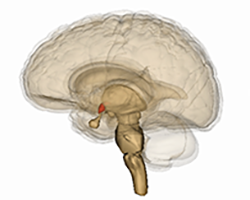
A period starts in response to signals from the brain. The hypothalamus is located near the bottom center of the brain, colored in red here. The pituitary gland is just below that. Those parts of the brain send out hormones that start the menstrual cycle. Image by Life Science Databases via Wikimedia Commons.
There are two parts of the brain that are especially important for this. The first part is called the hypothalamus. The hypothalamus tells the second part, called the pituitary gland, to release hormones. The pituitary gland is about the size of a pea. But despite its small size, it has a lot of responsibilities. In the menstrual cycle, the pituitary gland releases hormones that tell the ovaries to release an egg cell. This is the start of the egg cell’s adventure.
First, the egg cell starts in the ovaries. A woman is born with all of the egg cells that she will ever have. They live in her ovaries until it is time for one to start its adventure. But, they are not ready to continue in the menstrual cycle yet. In other words, they are not mature. When the pituitary gland releases hormones, the ovaries have the power to mature one egg cell.
Once that egg cell is mature, it pushes through the ovaries and into the fallopian tubes. Then, it has completed one part of its journey in the menstrual cycle — this is technically called ovulation.
No Fertilization, No Problem
While in the fallopian tubes, the egg cell can meet a sperm cell. This is called fertilization. Fertilization is the first step in pregnancy. To prepare for the fertilized egg cell, the uterus begins to line itself with a soft cushioning. This is called endometrial tissue, and it is filled with blood. The endometrial tissue provides important nutrients for the fertilized egg cell to develop into a fetus.
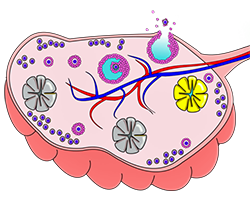
But what happens if the egg cell is not fertilized?
In that case, the endometrial tissue is not needed. So, the uterus sheds the endometrial tissue and blood through the vagina. And this is menstruation.
The very first egg cell to complete its journey from the ovaries to the uterus during a girl’s first menstrual cycle is something new for the body. After a girl’s first period, it will take time for her body to adjust to this change. Her second period may be a while after her first. But that’s normal.
Knowing how to take care of your period is an important part of menstruation. So, let’s talk about menstrual hygiene management.
History of Menstruation
Just like there is shampoo for your hair and soap for your body, there are also things to manage your period. There are pads, underwear liners, and tampons (just to name a few).

Girls have had those things to manage their periods for a long time. Ancient Roman women even made tampon-like devices out of wool. And in 1875, Lydia Pinkham used herbs from her garden in the United States that helped get rid of cramps and headaches during periods.
But for a long time, scientists debated the menstrual cycle. They did not know exactly why women get periods. In fact, it was not until the 1930s that many scientists started to understand that the menstrual cycle was an important part of reproduction.
One of the first people to teach girls how to take care of their periods was a nurse named Margaret Sanger. In 1916, Margaret Sanger wrote a book called What Every Girl Should Know. Her book was used to teach girls about puberty and what happens when a girl gets her period. Margaret Sanger also wrote about what a girl feels when she gets her period. She taught that it is common for some girls to get cramps or headaches during their periods. This helped girls manage their periods better.
A Shared (Yet Different) Experience
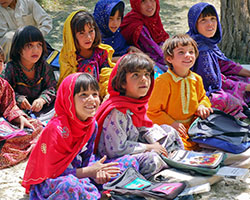
Every girl’s period is different, and that includes how a girl manages her period. Some girls use pads, while other girls prefer tampons. How a girl manages her period even looks different around the world. In many developing parts of the world, girls may not have those same materials to manage their periods.
Take for example a small village in Uganda, Africa. Some girls in the village sew pads made out of cloth, which they can wash and reuse for a long time. That might be really different from what girls in other countries experience. But, cloth pads are friendly to the environment and cost less money than other pads.
No matter how long a girl’s menstrual cycle is or how she manages her period, all girls do share something in common when it comes to menstruation. And that is that all girls’ periods are nothing to be embarrassed about. The menstrual cycle is a normal biological process that most girls around the world experience. So, don’t be ashamed if your body experiences this change.
Moon phases image by Sandeep Gangadharan via Flickr.
This Embryo Tale was edited by Dina Ziganshina and is based on the following Embryo Project articles:
Horwitz, Rainey, "Lydia Pinkham’s Vegetable Compound (1873-1906)". Embryo Project Encyclopedia (2017-05-20). ISSN: 1940-5030 http://embryo.asu.edu/handle/10776/11506.
Malladi, Lakshmeeramya, "What Every Girl Should Know (1916), by Margaret Sanger". Embryo Project Encyclopedia (2017-12-12). ISSN: 1940-5030 http://embryo.asu.edu/handle/10776/13024.
Van Iten, Brendan, "Estrogen and the Menstrual Cycle in Humans". Embryo Project Encyclopedia (2016-06-22). ISSN: 1940-5030 http://embryo.asu.edu/handle/10776/11344.
Read more about: What Is the Menstrual Cycle?
Bibliographic details:
- Article: What Is the Menstrual Cycle?
- Author(s): Emily Santora
- Publisher: Arizona State University School of Life Sciences Ask A Biologist
- Site name: ASU - Ask A Biologist
- Date published:
- Date accessed:
- Link: https://askabiologist.asu.edu/period-cycle
APA Style
Emily Santora. (). What Is the Menstrual Cycle?. ASU - Ask A Biologist. Retrieved from https://askabiologist.asu.edu/period-cycle
Chicago Manual of Style
Emily Santora. "What Is the Menstrual Cycle?". ASU - Ask A Biologist. . https://askabiologist.asu.edu/period-cycle
Emily Santora. "What Is the Menstrual Cycle?". ASU - Ask A Biologist. . ASU - Ask A Biologist, Web. https://askabiologist.asu.edu/period-cycle
MLA 2017 Style

Humans have associated the menstrual cycle with the moon since ancient times. That's because the moon cycle lasts about as long as the average menstrual cycle: 29 days. The moon doesn't directly control people's menstrual cycles, but the two cycles still might line up as a coincidence.
Be Part of
Ask A Biologist
By volunteering, or simply sending us feedback on the site. Scientists, teachers, writers, illustrators, and translators are all important to the program. If you are interested in helping with the website we have a Volunteers page to get the process started.
